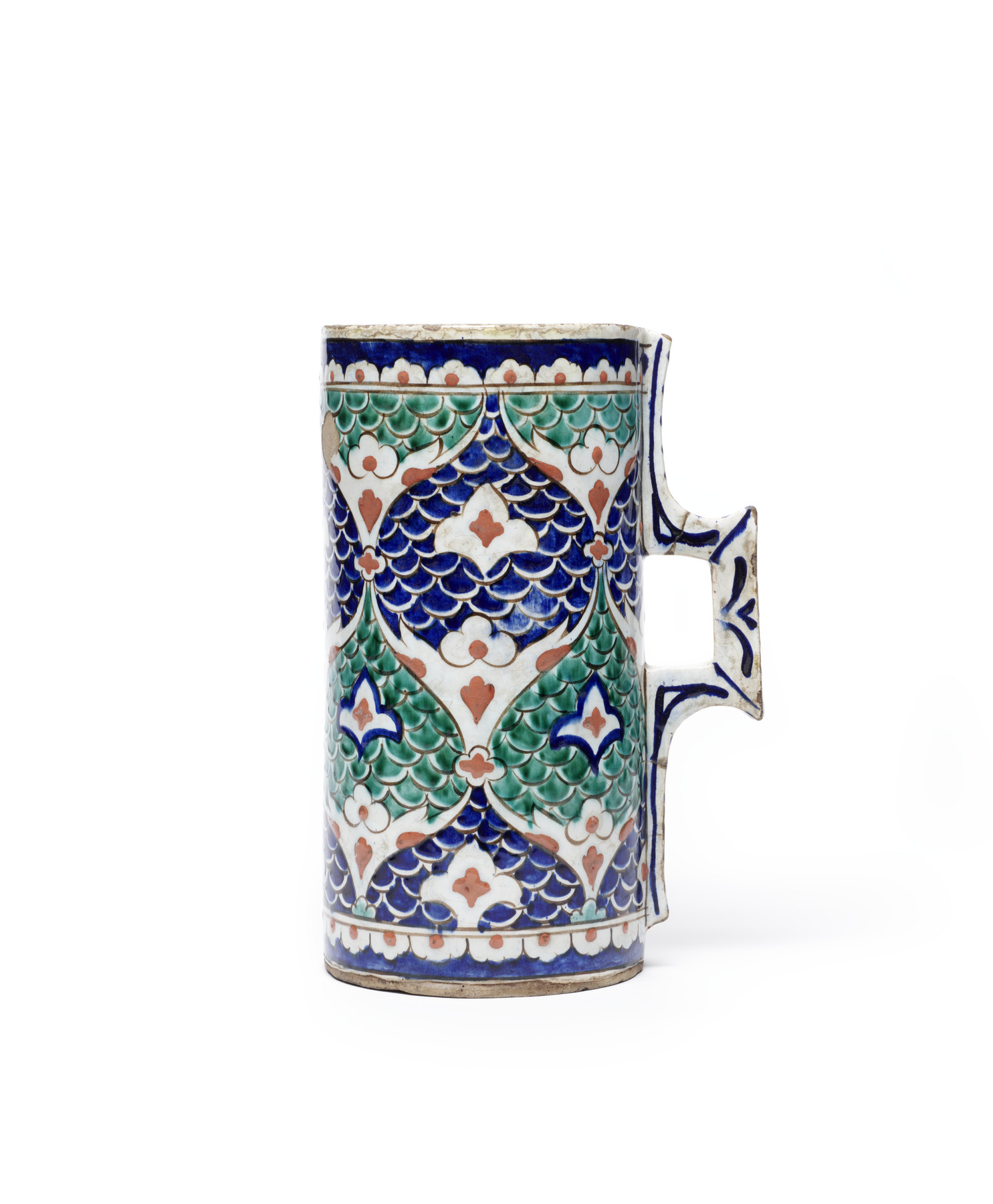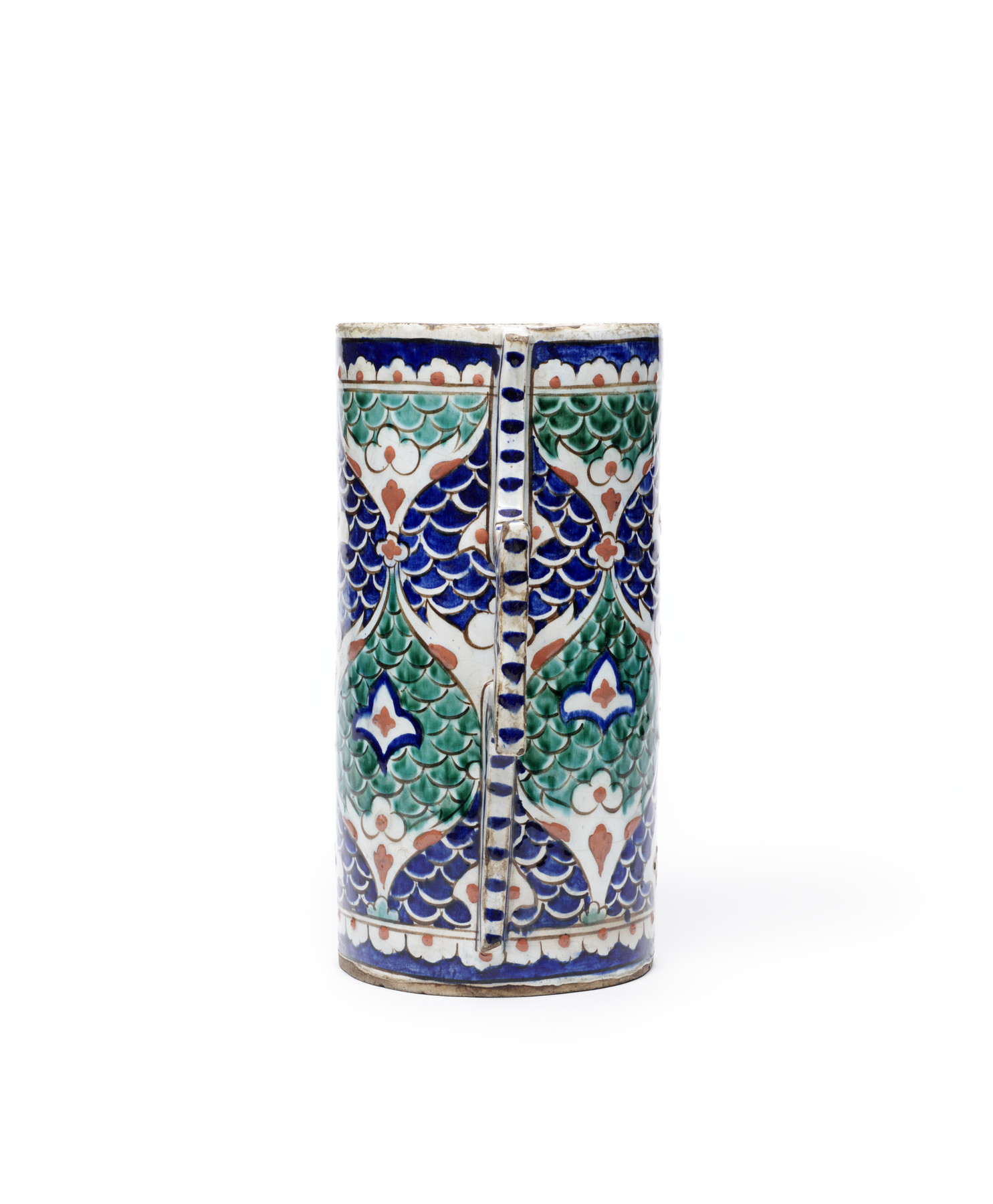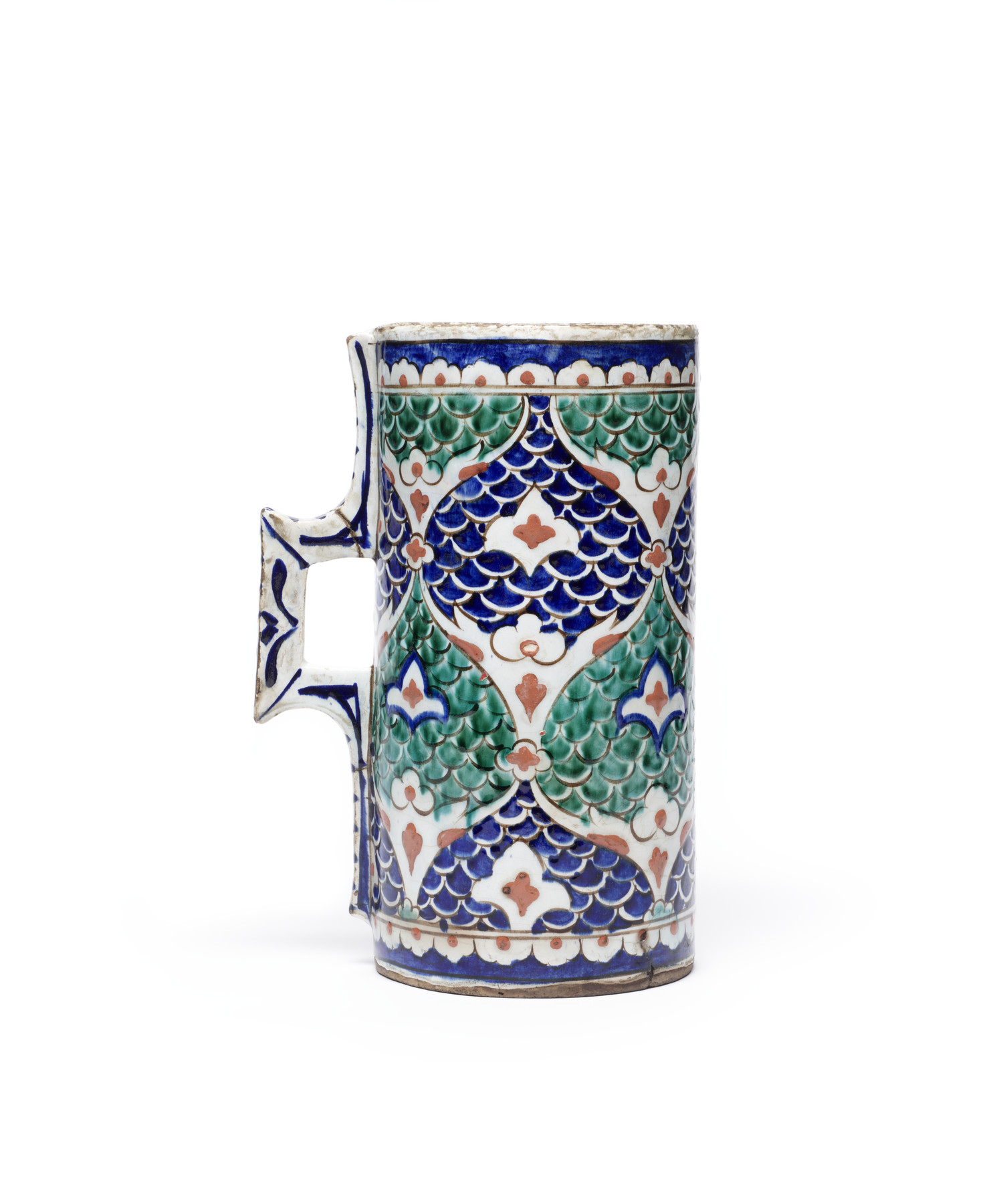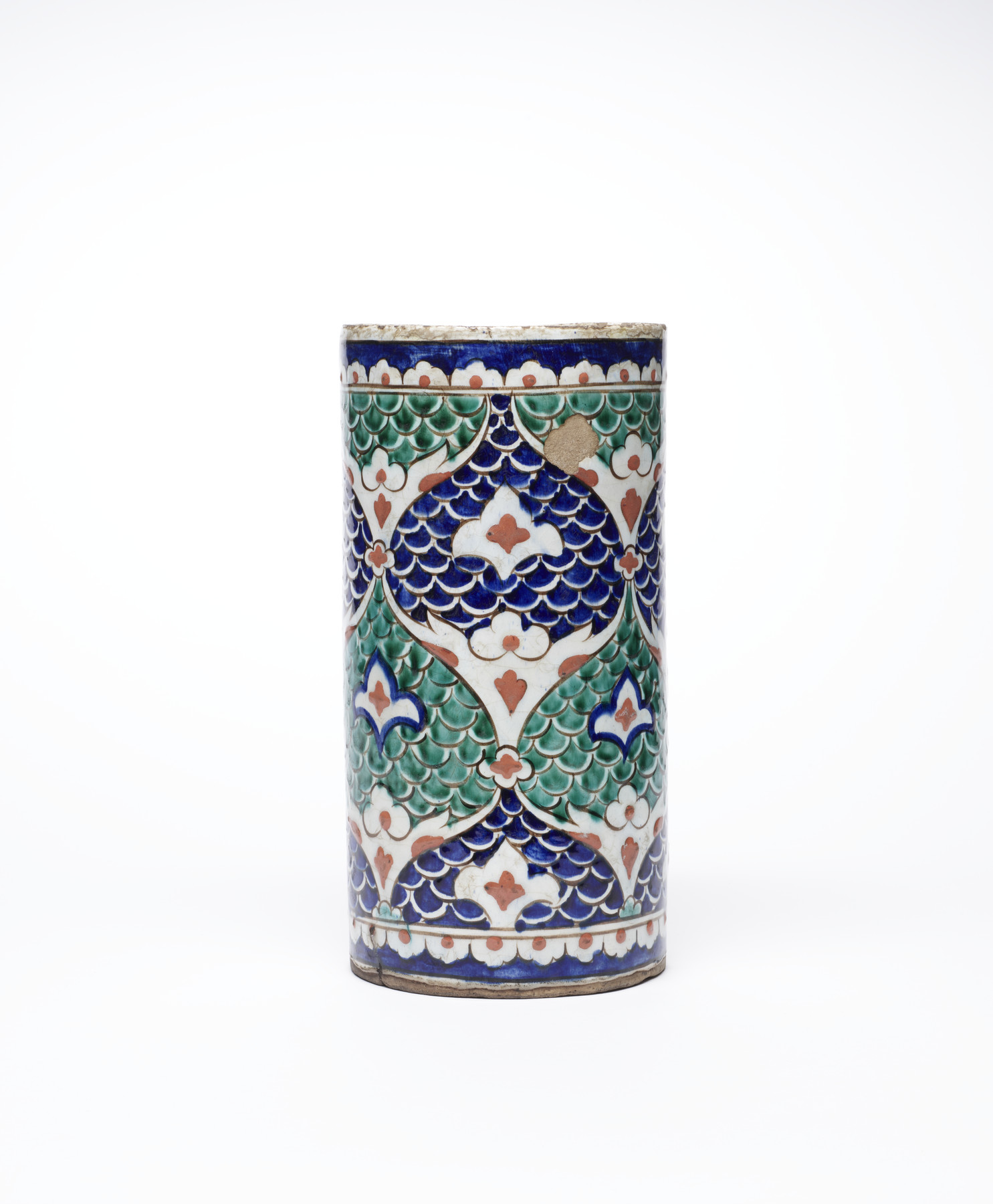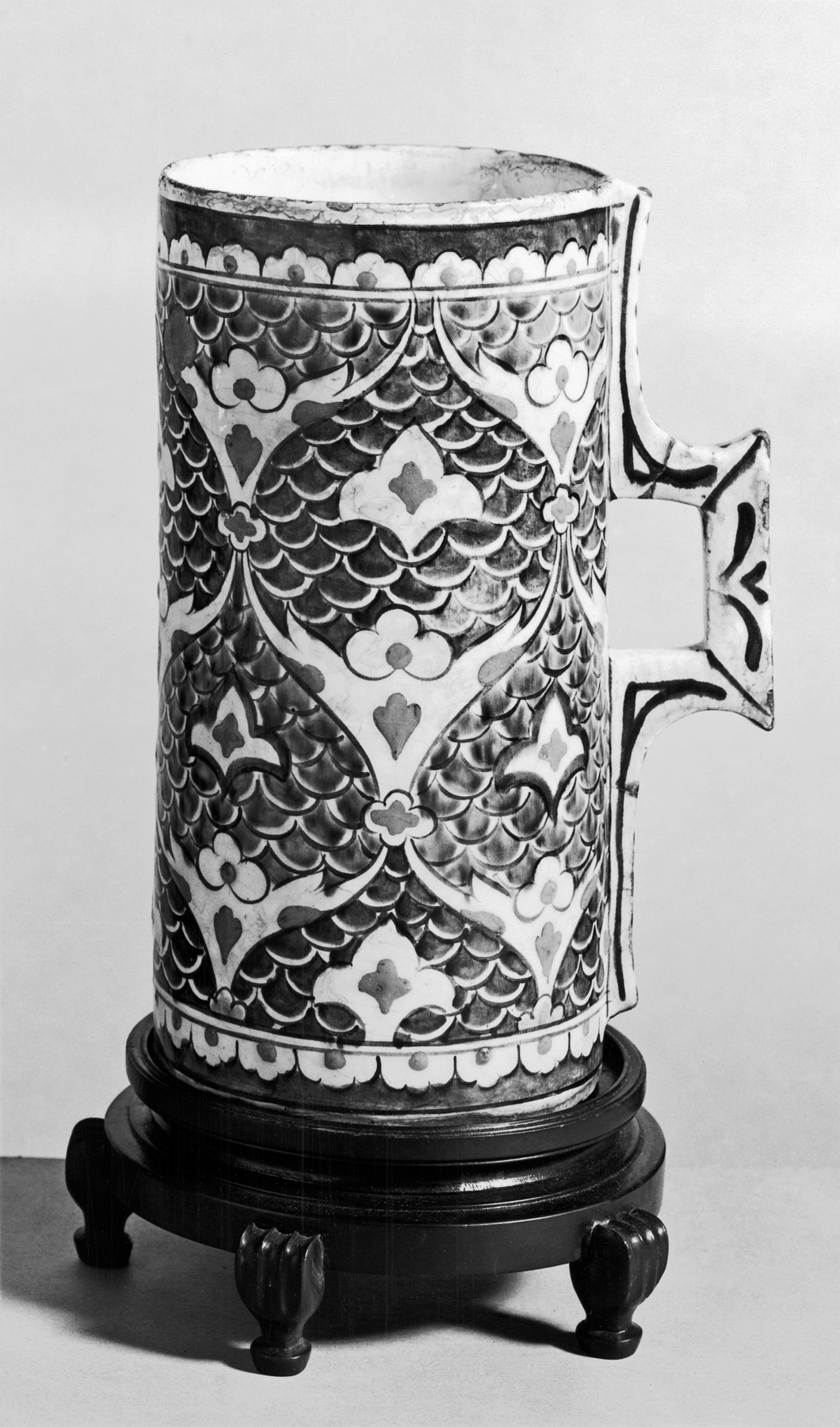Tankard
(Islamic World )
Perhaps best known among the ceramics produced in the Ottoman Empire are those made in İznik, a town southeast of Istanbul (in present-day Turkey). The artists working in İznik produced dishware for eating and serving, vessels like jugs and tankards, as well as tiles that adorned the walls of buildings. In addition to the hard, white clay body and the crystal-clear glaze, a characteristic feature of İznik ceramics is the color palette of a bright orange-red among shades of blue and green in the underglaze decoration.
Provenance
Provenance (from the French provenir, 'to come from/forth') is the chronology of the ownership, custody, or location of a historical object. Learn more about provenance at the Walters.
American Art Association, New York, 1914 [no. 621 of a sale (?)]; Henry Walters, Baltimore, 1914, by purchase; Walters Art Museum, 1931, by bequest.
Geographies
Turkey, Iznik (Place of Origin)
Measurements
H: 9 1/2 x Diam: 4 13/16 in. (24.1 x 12.2 cm); W at handle: 6 1/2 in. (16.5 cm)
Credit Line
Acquired by Henry Walters, 1914
Accession Number
In libraries, galleries, museums, and archives, an accession number is a unique identifier assigned to each object in the collection.
In libraries, galleries, museums, and archives, an accession number is a unique identifier assigned to each object in the collection.
48.1187

